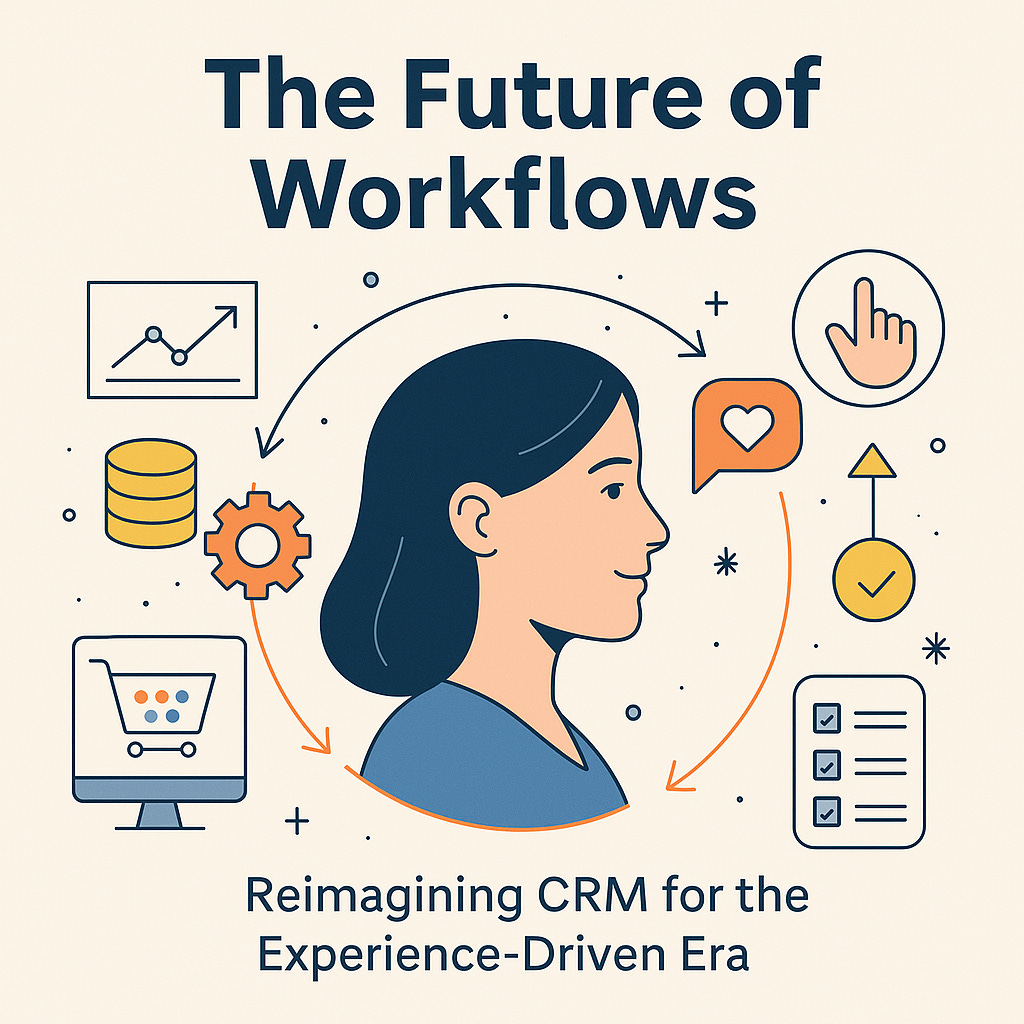The Future of Workflows: Reimagining CRM for the Experience-Driven Era
As businesses stand on the brink of a new digital frontier, the way we think about workflows, customer engagement, and business processes is undergoing a profound transformation. At the heart of this shift lies the convergence of artificial intelligence, data, and intelligent automation—not tied to any specific tool, but rather woven into the fabric of how modern organizations operate.
This future isn't just about efficiency. It's about redefining the value exchange between businesses and their customers. It's about workflows that are smarter, more intuitive, and deeply customer-centric.
From Systems of Record to Systems of Action
For years, businesses relied on systems that served primarily as repositories of data—capturing customer interactions, storing histories, and generating reports. These were important foundational steps, but they did little to actively improve the experience for the end user or to drive value in real time.
Today, those static systems are evolving into dynamic systems of action. Workflows are no longer just automated sequences—they're intelligent ecosystems that:
Understand context
Predict needs
Initiate meaningful engagement
Enable teams to respond faster, and more personally
This shift reflects a deeper transformation: from viewing customers as data points, to recognizing them as individuals with intent, emotion, and unique journeys.
Customer-Centric Design Is the New Differentiator
The most successful organizations in this new era won't be those that simply adopt AI or automate more—they’ll be those that design every process around their customer.
What does that look like?
Intuitive Journeys: Workflows are designed to feel natural to the customer. Every step anticipates the next, reducing friction and increasing satisfaction.
Proactive Support: Rather than waiting for a customer to ask for help, systems surface guidance and action exactly when needed—sometimes even before the customer realizes they need it.
Personalized Interactions: Based on real-time data and behavior, communications and experiences are tailored to the individual, not just to a segment or persona.
Integrated Feedback Loops: Customer input is not only captured but continuously influences how workflows evolve, creating a system that learns and adapts.
This kind of design isn't just about aesthetics or UX—it's about ensuring that every workflow contributes to deeper engagement, trust, and loyalty.
The Value Shift: From Transactions to Outcomes
In the past, business value was often defined by internal metrics—process completion rates, cost savings, or task volume. While these remain important, the emerging paradigm is focused on customer outcomes:
Did the customer get what they needed faster?
Did the experience feel personal and meaningful?
Was the interaction aligned with their preferred channel and context?
Did they feel empowered, respected, and understood?
When workflows are reengineered with these questions in mind, the result is not just efficiency—it’s true differentiation.
Moreover, businesses gain in parallel. Smoother journeys reduce support costs. Happier customers are more loyal. And intelligent systems free up human teams to focus on high-value, relationship-building work.
Preparing for What’s Next
To thrive in this future, businesses must move beyond the checklist of technology adoption and instead commit to a mindset shift—one that places customer value and human-centric design at the center of every workflow, decision, and interaction.
Here’s how organizations can begin:
Rethink Value Creation: Measure success through the lens of the customer, not just internal KPIs.
Design with Empathy: Involve real users in process design. Understand their goals, pain points, and context.
Build Flexibility into Systems: Enable workflows that can adapt to individual journeys and evolving customer needs.
Empower Teams with Insights: Equip every customer-facing role with real-time, actionable information—so they can deliver faster, smarter support.
Cultivate a Learning Culture: Use data not just to measure performance, but to continuously improve the experience.
Conclusion: The Age of Intelligent Experience
We are entering an age where every workflow is an opportunity—to build trust, to create value, and to strengthen relationships. The businesses that lead this charge won’t be the ones with the most sophisticated tools, but the ones that deeply understand their customers and design every part of their operation to serve them better.
The future of workflows isn’t just automated. It’s intelligent. It’s empathetic. And above all, it’s human.


